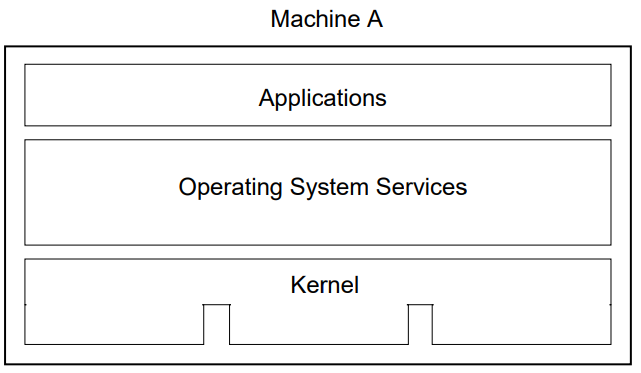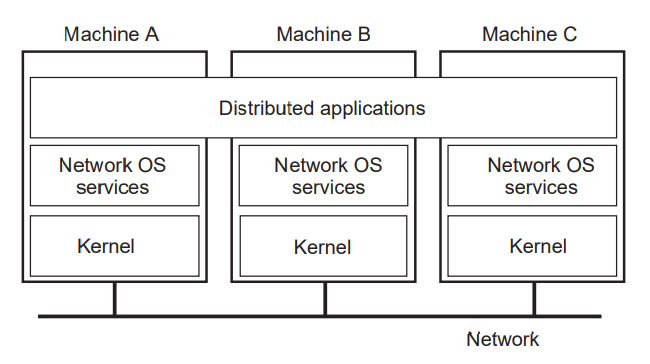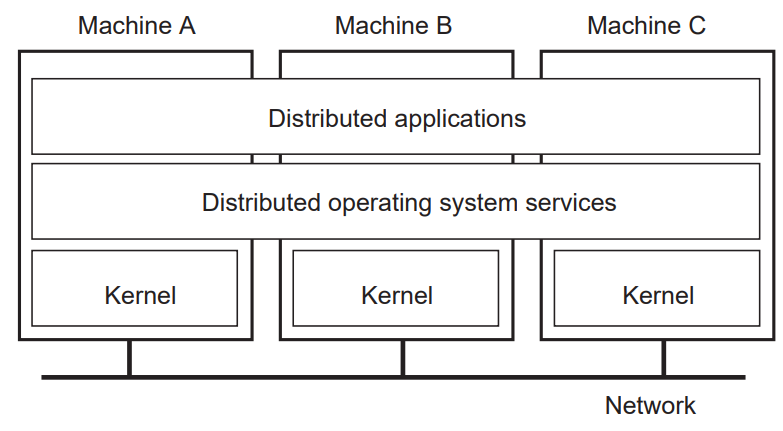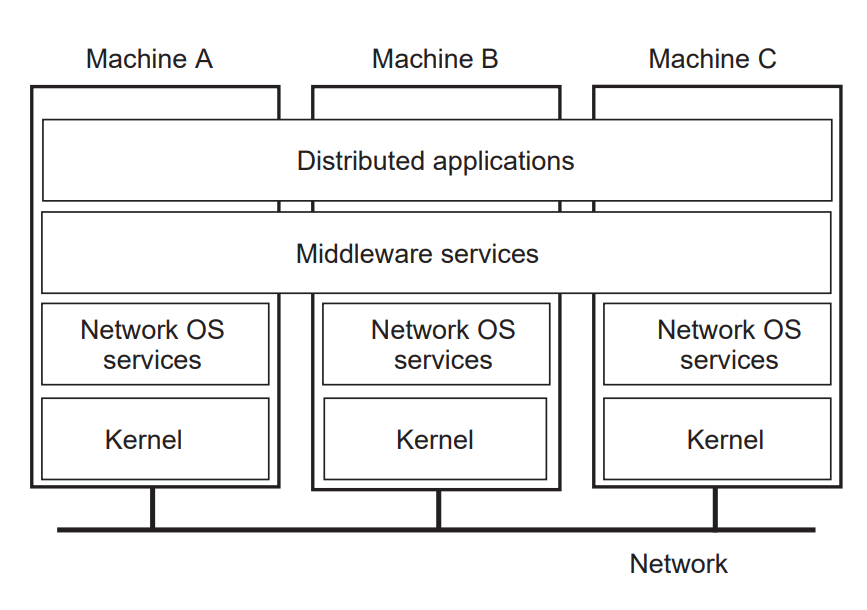Lecture 1 Introduction To Distributed Systems
Distributed Systems: What and Why
What is a distributed system?
The Ideal:
A distributed system is a collection of independent computers that appear as a single coherent system
~ Andrew Tannenbaum
-
However, realistically, it’s hard to create a system like this. There are several challenges in building ‘true’ distributed systems.
-
Currently, we have what appears to be a coherent system, however when something breaks, it becomes obvious that it is not one system
A revised definition:
A collection of independent computers that are jointly used to perform a single task or provide a single service
- Collection: more than 1
- Independent Computers: independent systems that can run on their own without the other systems if necessary
- Used jointly: working together
- Single task/service: shared goal
Examples of Distributed Systems/Applications
- DNS
- Web server (HTTP)
- Web Applications
- Supercomputer
- Google Search
- ATM Networks, and wider Banking network
- Car, Aeroplane
- Industrial Control Systems (elec, water)
- Active Directory
- Distributed Database (e.g. CockroachDB, Cassandra)
- IoT
- IPFS (distributed Filesystem/blockchain)
- Ceph (distributed filesystem)
- WiFi Network
- Torrent network
- Multiprocessors??
- Tor network
- ROS (Robot OS)
- CDN
- Cloud Computing
- Crowd-sourced computing
- GPS
- CSE Login Servers
- Federated Machine Learning
- OAuth
- Masterdon (Peer social media network)
- IRC
Advantages of Distributed Systems
- Cost
- Buying multiple smaller hardware components is cheaper than buying a system that is large
- Performance
- Can out-perform the available performance of a single system
- Scalability
- Grow system as required (e.g. add more storage)
- Reliability
- Redundancy
- (Inherent) Distribution
- Some services are inherently distributed (e.g. web)
Disadvantages of Distributed Systems
- Adding new component
- There is now a network component that is relied upon (introduces performance limits)
- Software Complexity
- Distributed software is more complex, and harder to develop
- Failure
- More elements that can fail (failure must be dealt with in some way)
- Security
- Easier to compromise (because of increased complexity, addition of network component etc)
I can never do any work on a distributed system because a computer I’ve never heard of has crashed
~ Lamport
Hardware and Software of Distributed Systems
Hardware Architecture
- A device with direct memory access is not a distributed system (e.g. uniprocessor, multiprocessor)
- Multicomputers are distributed systems. They do not have direct access to each other’s memory.
- The computers are connected by some sort of network. In order to access memory on another computer, it must be done via a request on this network
- Homogeneous (all nodes are the same computer/architecture/specs) or Heterogeneous (different resources/capabilities across different nodes)
Software Architecture
- Uniprocessor OS:
- Multiprocessor OS: Kernel designed to run on multiple CPUs. Uses same communicate primitive as uniprocessor OS. Can share memory between processes etc.

- Generally provides a single system image - no matter which processor is running, the system looks the same
- Limitations: have to have the same kind of processor
- Network OS: several uni/multiprocessor operating systems running on a multicomputer

- Each machine runs a kernel and their own network and OS services, but have shared applications
- Distribution of tasks is explicit to user
- No single image: individual nodes are highly autonomous
- Application must deal with all distributed system problems: differences across systems, communication, failures etc.
- All distributed system problems must be solved by the application
- Distributed OS: Shared/distributed operating system services and applications, with independent kernels

- High degree of transparency (can see more information about other nodes) - single system image
- Nodes work together to provide a single memory, network service etc.
- Usually relies on homogenous hardware
- Abstracts details away that make it harder to optimise the system
- More work required to communicate etc. to provide the abstraction
- Inflexible: have to write applications specifically for the distributed OS
- Middleware Model: Network/OS Services and kernel on individual machines, but provide a shared middleware services layer between OS services and the distributed application

- Has some sort of distributed system interface for solving distributed system processes, but can run on multiple different OS’s.
- Why is this model successful?
- Builds on commonly-available network OS abstractions
- Usually runs in userspace (easier to run the system anywhere)
- Raises level of abstraction for programming
- Independent from OS/network protocol/programming language etc. making it more flexible
- Problem: bloated interface/too many features
Distributed Systems and Parallel Computing
- Parallel computing is usually focused on improving performance of an application by running it in parallel
- Shared-memory systems: multiprocessors with direct memory access
- Distributed memory systems: Multicomputer systems
